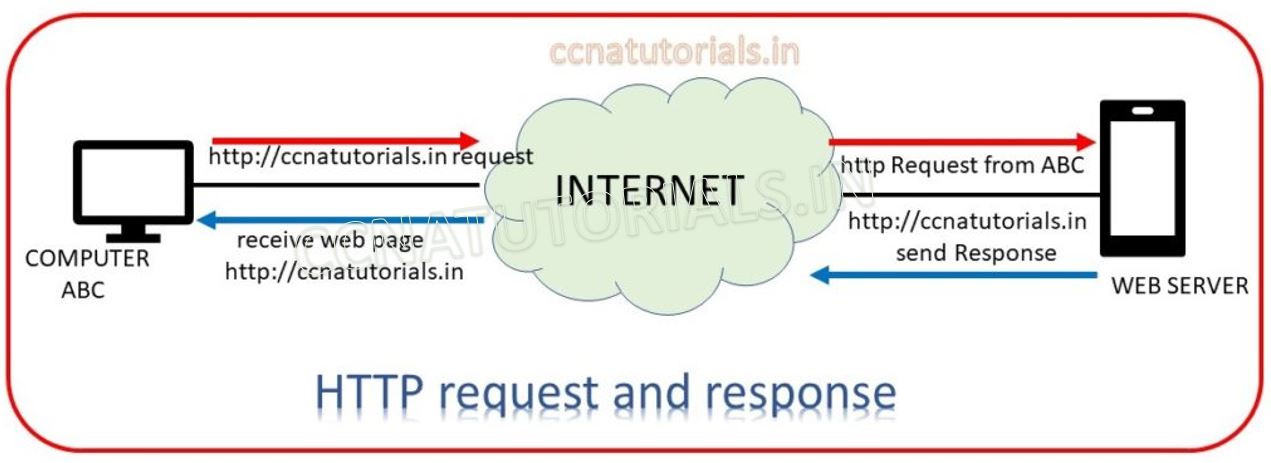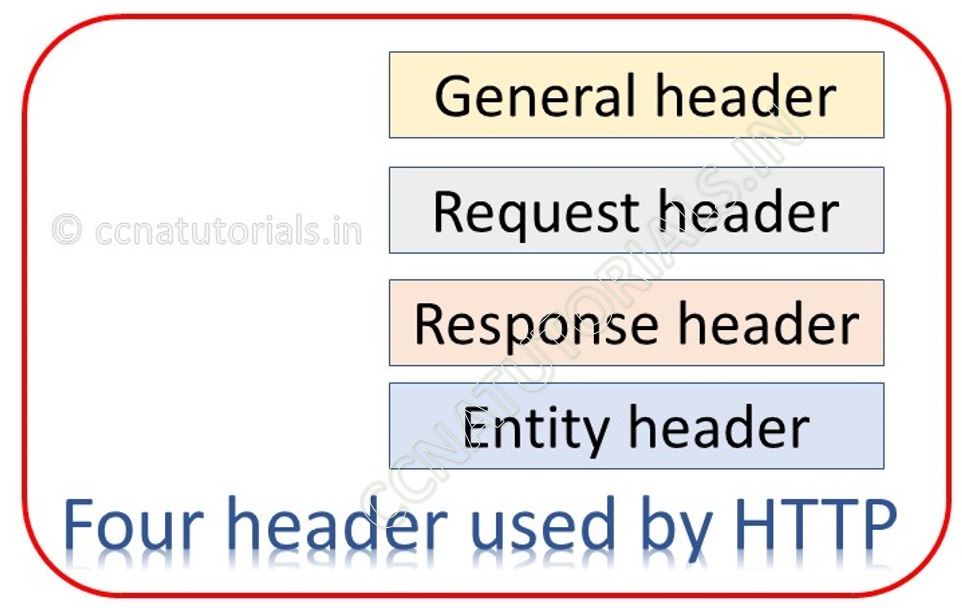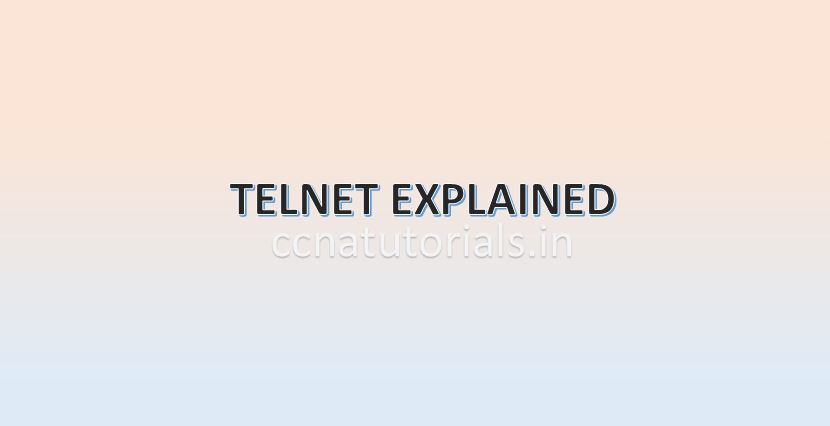In this article I describe the HTTP Hypertext Transfer Protocol in computer network for CCNA exam. HTTP Hypertext Transfer Protocol is related to web services in TCP/IP Suite model. The HTTP Hypertext Transfer Protocol allowed to browse the web service from a web server in the network or internet. HTTP Hypertext Transfer Protocol is very useful to access the web server in the network from a computer or endpoint device. The HTTP Hypertext Transfer Protocol is an application layer protocol in TCP/IP suite model.
HTTP Hypertext Transfer Protocol allow to access the text, graphics, audio and video data from the web server on port 80 in the network. A user can access the web server by typing the domain name in the browser. The DNS protocol convert the DNS name into the related IP address of web server on the internet. It may be beneficial to know about the layered approach in the OSI and TCP/IP suite model.
Before going to learn about HTTP Hypertext Transfer Protocol we should remember the OSI suite and TCP/IP suite model. There are many manufacturer of computer machine in the market. Initially when computers became single user public computer. The computers communicate with only same brand machines. It happens because there was no any fix standard for data transfer between different devices. It is very difficult to make communication with each other when the hardware are of different brands or company. In this article I describe the some basic part of OSI reference layer and TCP/IP Suite model basic concepts in networking with FTP File Transfer Protocol.
OSI reference model in computer network followed by various vendors to overcome the compatibility problem. After implementation of OSI reference model in computer network, equality maintains by all manufacturer. In 1970 the Open Systems Interconnection (OSI) reference model was created by the International Organization for Standardization (ISO). The OSI model was meant to create inter-operable network with different manufactured devices. In this article I describe some layered approach of TCP/IP Suite model basic concepts in computer network. Before understanding the TCP/IP Suite model basic concepts it is necessary to know about the 7 layers of OSI reference model because the basic work of each layer is described in the OSI reference model. You can read the full article related to OSI reference model in computer networking here.
Importance of OSI reference model
Before going to know about the HTTP Hypertext Transfer Protocol. It is necessary to know the function of application layer in OSI model and TCP/IP model. Initially not only hardware but software also not supported for work the different computer brand. It became very difficult for all computer users to working without implementation of OSI reference model in computer network. It is necessary then to make some common protocols for all vendors of computer. Before implementation of OSI reference model in computer network, all vendors implements their own protocols on computer hardware and software.
In networking OSI reference model became helpful. OSI reference model describes the flow of data between nodes in any network. Data from one computer application to another computer application transfer by following some common protocols. The OSI reference layer also become beneficial for troubleshooting the network problems. TCP/IP and Cisco three layered hierarchical model of Cisco became more helpful alongside the OSI reference model.
The Layered Approach in computer network for HTTP Hypertext Transfer Protocol
The Layered approach was the best way to make equality for all computer devices. Layers are not physical but following some protocols. Protocols are for connectivity, connections, data transfer and more. All manufacturer begin to follow the layered approach for OSI reference model in computer network. The OSI reference model change in TCP/IP reference model and later on Cisco three layered hierarchical model. OSI layer architecture have 7 layers. TCP/IP reference model convert these 7 layers into only four layers. After that Cisco three layered hierarchical model converts these 7 layers into three layers. Some layers combined to work in a single layer.
OSI is acronym for open system interconnection. The OSI is a logical reference OSI reference model in computer network. OSI model helps for data flow between different devices and operating systems. All manufacturer used their own architecture before invention of OSI reference model. It was very difficult to establish data communication between different devices. To overcome this problem international organization for standardization (ISO) created the open systems interconnection (OSI) reference model. OSI reference model make data flow possible between different operating system, devices and hardware. Later the OSI model adopted by Cisco as Cisco three layered hierarchical model.
Structure of OSI reference model
OSI reference model in computer network consist of 7 layers. These 7 layers further divided into two groups. First 3 layers works for application communication and remaining 4 layers works for data flow. Application, presentation and session layers define the application communication. Transport, network, data link and physical layers define the data flow. Networking protocols works only on last four layers.
TCP/IP Suite model basic concepts
TCP/IP is acronym for Transmission Control Protocol/Internet Protocol (TCP/IP suite model). In this section of the article I describe about TCP/IP suite model basic concepts in detail. TCP/IP suite model is a reference model like OSI layers. Instead of 7 layers of OSI reference model. TCP/IP suite model consist only four layer. All seven layers are merged into four layers only. TCP/IP suite model was designed and implemented by Department of Defence (DoD). TCP/IP developed to preserve data integrity. The main purpose to develop the TCP/IP is to provide security in the network. A lots of protocols works on each layer to provide a secure network.
It is necessary to understood the protocols used in TCP/IP Suite model basic concepts. IP addressing play an important role in TCP/IP Suite model basic concepts. By using the IP address and subnet masking broadcast domain breaks. It will improve the performance of the network. Breaking broadcast domain increase the data flow speed. Here IP stands for IPV4 only. We ignore the IPV6 for some time in this article. It will make it easy to understand the TCP/IP Suite model basic concepts.
A snap of TCP/IP Suite model basic concepts
In the decade of 1970’s TCP/IP suite model developed by DoD. In the initial stage TCP/IP suite model divided into two segments TCP and IP. Later its name registered with combined name of TCP and IP like TCP/IP model. ARPA, the Advanced Research Projects Agency of DoD officially authorised to use TCP/IP suite model. TCP/IP model was working well so it was adopted by many organisations. In today scenario it is mostly using reference model for networking. Internet is the best example of using TCP/IP.

Basic Idea of Layers of TCP/IP Suite model
There are four layers in DoD model. As shown in above image. Top 3 layers of OSI combined and create the Process/Application layer. Transport layer remain Transport layer. Network layer become internet layer and last two layer combined and called link layer. You can see both model are similar in concept.
Process or Application layer of DoD model in TCP/IP Suite model
This is the first layer of TCP/IP of DoD model. It is combination of top three layers of OSI reference model. The functions of Application layer, presentation layer and session layer in OSI model works in single layer process layer. This layer supports the point to point communication and controls the user interface. The data encryption and decryption also done at this layer. Example of some protocols functions at this layer are Telnet, FTP, LPD, TFTP, SMTP.
Transport layer of DoD model in TCP/IP Suite model
Transport layer of TCP/IP is same as the Transport layer of OSI reference model. It supports the TCP and UDP protocol. This protocol converts the main data segment into packets and transport to the internet layer. The responsibility of Transport layer is to combine the segments and built the data. The data should be reconstruct in its real form. Transport layer is also responsible for creating end-to-end communication between sender and receiver. This layer ensure the delivery of segment in sequence at the receiving device. This property maintains the data integrity.
Internet layer of DoD model in TCP/IP Suite model
Internet layer of TCP/IP is similar to the network layer of OSI reference model. Routing protocols functions on Internet layer of TCP/IP model. Addressing and filtering of packets is main responsibility of Internet layer of TCP/IP model. This layer provides the transmission of packet in the whole network. Some example of protocols functions on internet layer are ICMP, ARP and IP.
Link layer of DoD model in TCP/IP Suite model
Link layer is the least layer of TCP/IP. Basically link layer is combination of data link and physical layer of OSI reference model. Link layer is also known as Network Access layer. It works on MAC address based data transmission. Link layer handles the frame and bits. It receive the bits and constructs frame from merging bits in a sequence. In case of any bit is missing this layer request to re transmit the bits. Ethernet, FDDI, WAP etc functions on this layer. There is no any preset specification for link layer. Link layer functions on any type of existing media.
HTTP Hypertext Transfer Protocol
HTTP hypertext transfer protocol is an application layer protocol. HTTP invented to transfer the information on network between the web server and the clients. The HTTP Hypertext Transfer Protocol is the basic requirement to browse the websites on internet. HTTPS also used in place of HTTP for the same purpose. HTTPS is secure protocol than the HTTP.
Basic concept of HTTP Hypertext Transfer Protocol
When we browse internet on our computer then the web server and our computer work like client server computing. HTTP Hypertext Transfer Protocol is a request protocol working at application layer.
The client sends a HTTP request to the web server, the server respond to the client and provides web resources. TCP or UDP both used during the HTTP request or response. Web browser cache stores the previous accessed websites and reuse them to improve the speed of internet. HTTP is an application layer protocol works on TCP/IP protocol suite.

HTTP Hypertext Transfer Protocol request and response sequence
HTTP use port 80 and 8080 for request in a network. A client sends the request basis on URL Uniform Resource Locator typed in the browser. Firstly, DNS server resolve the IP address of the requested URL. After getting the IP address the HTTP request send to the web server.
The web server listening on these port waits for a request message. On receiving the HTTP request server respond to client. The requested HTML resources provides to the client. If something went wrong the error code message also sent to the client. HTTP is a stateless protocol. At a time, multiple HTTP Hypertext Transfer Protocol request send and received by a client.
HTTP Protocol is connection less
A client sent a HTTP request on internet. The related web server listens the request and send the response to the client. The connection made once during this transmission. After sending the response the web server disconnects the connection. Next time for new request a new fresh connection established.
Types of data on which HTTP Hypertext Transfer Protocol depends
HTTP Hypertext Transfer Protocol is totally media independent. HTTP is not bound any type of data to transfer between client and web server. It means, any type of data can be sent by HTTP protocol.
Architecture of HTTP Hypertext Transfer Protocol request
A client sends the HTTP request on URL basis. URL are the web address which are stored in DNS server with hosted IP address. URL are simple string of characters, number or special characters. The URL may be use for a website or a web service like FTP. It is depending on the client request what service is require to the client.
To get specified services a particular port number is use after the URL. If there is no port number found after URL then the request assumes on port 80 by default.
The format of URL is http://”URL”:’port number’ . The example of URL for HTTP request is http://ccnatutorials.in:80 . This URL provides the HTTP request on the internet. If we replace the port number 80 to 443 then the request changed from HTTP to HTTPs.

HTTP header are use to get the information of request. Four types message headers are use for HTTP Hypertext Transfer Protocol. The four message headers are General header, request header, response header and entity header. General header informs about both request and response message. Request header keep the information about HTTP request only. Response header keep the information about response message only. Entity header keeps the meta and entity body information.
Common Error code of HTTP Hypertext Transfer Protocol
There are a lot of codes are predefined to show various events. These codes are from 100 to 599. Some common error codes occur on client are below.
400 denote bad request. Bad request means the server cannot understand the request. Error code 401 denote unauthorised. Unauthorised means authentication error. Code 403 denote forbidden; it means access is forbidden by server. 404 denote not found, it means server cannot found the requested page. Similarly, there are a lots of code use for HTTP.
In this article I describe the HTTP Hyper Text Transfer Protocol in computer networking for CCNA Exam. I hope you found this article helpful. for any query or suggestion you may drop a comment below or contact us. your suggestions are always welcome by us.






